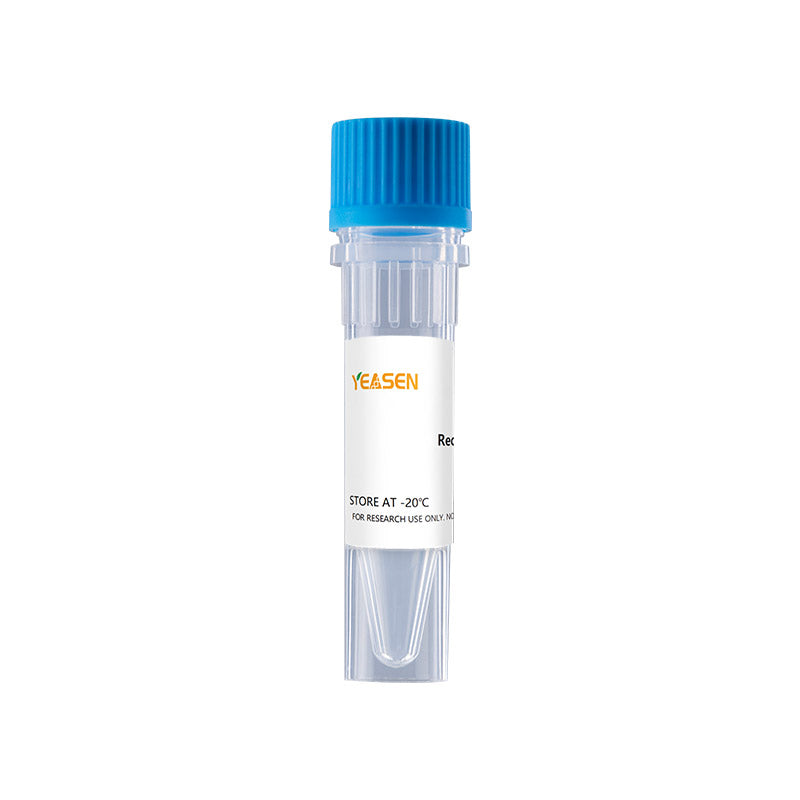Description
Fibroblast growth factor-16 (FGF16) is a member of FGF9 subfamily. All FGF family members are heparin-binding growth factors with a core 120 amino acid (aa) FGF domain that allows for a common tertiary structure. FGF-16 is most similar to FGF-9, sharing 73% aa sequence homology. Human FGF-16 shares 99% and 98.6% aa sequence identity with the mouse and rat FGF-16, respectively. FGF-16 binds to and activates FGF receptor 4. The expression pattern of FGF-16 and its effect on adipocyte proliferation suggest a role for this protein on the proliferation of embryonic brown adipose tissue. FGF16 belongs to the large FGF family, which plays key role in promoting mitosis and cell survival, and also involved in embryonic development, cell growth, tissue repair, morphogenesis, tumor growth, and invasion. Meanwhile, the expression of FGF-16 in the perinatal and postnatal heart and its functional significance in neonatal rat cardiac myocytes.
Product Properties
|
Synonyms |
FGF16, FGF-16, fibroblast growth factor 16 |
|
Accession |
O43320 |
|
GeneID |
8823 |
|
Source |
E.coli-derived human FGF-16 protein, Ala2-Arg207. |
|
Molecular Weight |
Approximately 23.6 kDa. |
|
AA Sequence |
AEVGGVFASL DWDLHGFSSS LGNVPLADSP GFLNERLGQI EGKLQRGSPT DFAHLKGILR RRQLYCRTGF HLEIFPNGTV HGTRHDHSRF GILEFISLAV GLISIRGVDS GLYLGMNERG ELYGSKKLTR ECVFREQFEE NWYNTYASTL YKHSDSERQY YVALNKDGSP REGYRTKRHQ KFTHFLPRPV DPSKLPSMSR DLFHYR |
|
Tag |
None |
|
Physical Appearance |
Sterile Colorless liquid. |
|
Purity |
>98% by SDS-PAGE and HPLC analyses. |
|
Biological Activity |
The ED50 as determined by thymidine uptake assay using FGF-receptors transfected BaF3 cells is less than 0.5 ng/ml, corresponding to a specific activity of > 2.0 × 106 IU/mg. Fully biologically active when compared to standard. |
|
Endotoxin |
< 0.1 EU per 1μg of the protein by the LAL method. |
|
Formulation |
Lyophilized from a 0.2 μm filtered concentrated solution in 20 mM Tris-HCl, 1 M NaCl, pH 9.0, with 0.02 % Tween-20, 10 % Glycerol. |
Shipping and Storage
The products are shipped with ice pack and can be stored at -20℃ to -70℃ for 6 months.
Recommend to aliquot the protein into smaller quantities when first used and avoid repeated freeze-thaw cycles.
Cautions
1. Avoid repeated freeze-thaw cycles.
2. For your safety and health, please wear lab coats and disposable gloves for operation.
3. For research use only!
Payment & Security
Your payment information is processed securely. We do not store credit card details nor have access to your credit card information.
Inquiry
You may also like
FAQ
The product is for research purposes only and is not intended for therapeutic or diagnostic use in humans or animals. Products and content are protected by patents, trademarks, and copyrights owned by Yeasen Biotechnology. Trademark symbols indicate the country of origin, not necessarily registration in all regions.
Certain applications may require additional third-party intellectual property rights.
Yeasen is dedicated to ethical science, believing our research should address critical questions while ensuring safety and ethical standards.

